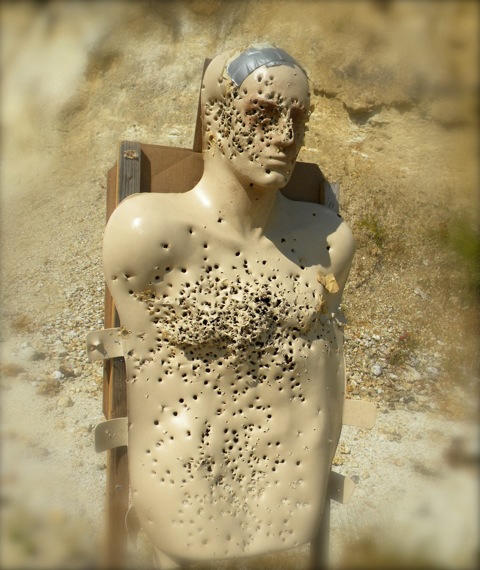 When you press the trigger it should be with predictable results - the bullet goes where you need it to, or at least extremely close. The speed you shoot at is dictated by the accuracy needed. With close, large targets you can fire rapidly. As the distance increases, and/or the size of the target decreases you’ll need to slow down to get the desired accuracy.
When you press the trigger it should be with predictable results - the bullet goes where you need it to, or at least extremely close. The speed you shoot at is dictated by the accuracy needed. With close, large targets you can fire rapidly. As the distance increases, and/or the size of the target decreases you’ll need to slow down to get the desired accuracy.
Some skills can be executed at the same speed regardless of conditions. I draw the pistol at the same speed no matter target size or distance to the target. The speed of the draw is one that accomplishes the task efficiently, without mistakes. Shooting tempo varies according to conditions.
Your shooting speed is just like driving. Speed varies according to road conditions. A normal speed on good, dry and straight blacktop might be too fast for a wet, curvy road. Your rate of fire is also dictated by conditions.
One of the biggest problems we see on the range are shooters trying to fire at the same speed regardless of distance and size of the target. They fire rapidly on close, large targets. Then attempt to shoot at the same speed for a small target that’s farther away – and miss. After missing they’ll fire again, but at the same speed or even faster in an attempt to catch up. The entire time they’re scoring miss after miss.
When you do miss it’s because you fired too fast. Usually this occurs because the trigger press was too fast, more of a slap or jerk. On close/large target you can get away with a questionable trigger press. At longer distance – or again smaller targets – the trigger press must be smooth. It should result in a “surprise break;” when the shot does fire it sort of catches you off guard.
A miss could also result from focusing on the target instead of the front sight. This occurs a lot at longer distances. The focus bounces between target and front sight. This shifting focus also occurs when engaging a moving target – the eye is attracted to the movement. Concentrating on the front sight allows you to hold the sights steady. Focus on the front sight before, during and after the shot.
Regulating or controlling speed is mandatory when firing on targets at varying distances and differing sizes. This can be difficult because mentally and physically we get caught up in trying to do everything at the same speed. Again, think about the “road conditions.”
The purpose of shooting is to hit. Through practice you determine your shooting speed. How fast can you shoot at close range and still get the desired accuracy? At longer distances, or smaller targets, how slow will you need to fire to ensure hits? Whatever speed you can hit at the range is the speed you use to engage the threat – regardless of the danger. You cannot let the risk factor control the pace of your shooting.
Discovering your shooting speed is essential to getting hits when pressing the trigger. Every press must result in an accurate shot. In “real life” lives depend on your accuracy.
Tiger McKee is director of Shootrite Firearms Academy, located in northern Alabama. He is the author of “The Book of Two Guns” - http://shootrite.org/book/book.html writes for several firearms/tactical publications, and is featured on GunTalk’s DVD, “Fighting With The 1911 - http://shootrite.org/dvd/dvd.html McKee’s new book, AR-15 Skills and Drills, is available off Shootrite’s website: http://shootrite.org/AR15SkillsBook/AR15SkillsBook.html
http://www.facebook.com/pages/Shootrite-Firearms-Academy/156608611038230?ref=ts